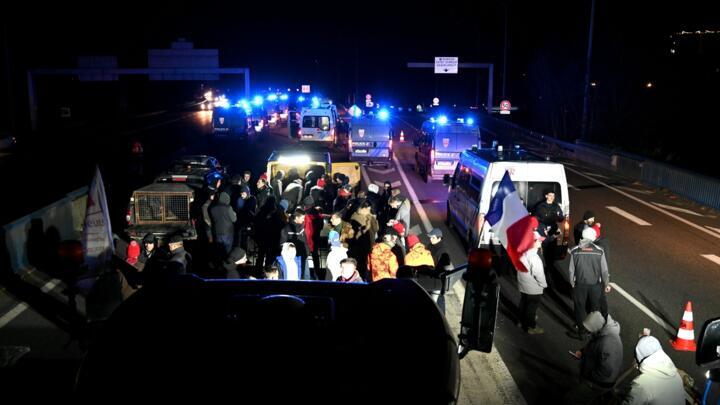Discover Pandipedia
Pandipedia is the world's first encyclopaedia of machine generated content approved by humans. You can contribute by simply searching and clicking/tapping on "Add To Pandipedia" in the answer you like. Learn More
Expand the world's knowledge as you search and help others. Go you!

The main differences between PBT (Polybutylene Terephthalate) and ABS (Acrylonitrile Butadiene Styrene) keycaps are based on their material properties, durability, texture, and manufacturing processes.
Material Properties:
- PBT has a semi-crystalline structure that makes it stronger, more heat-resistant, and generally more durable than ABS[3]. In contrast, ABS is more flexible and easier to mold, which contributes to its widespread use in mass-produced keyboards[6].Durability:
- PBT is more resistant to oils and chemicals, which prevents it from developing the greasy appearance common with ABS keycaps[3]. ABS keycaps, while cheaper, can wear down more quickly, with issues like faded legends and a shiny look due to prolonged use[1].Texture and Sound:
- PBT keycaps typically have a matte, textured feel and produce a crisper sound when typing[1][6]. ABS keycaps, on the other hand, have a smooth, shiny texture that can become slippery and develop a worn appearance over time[6].Manufacturing:
- The production of PBT keycaps is more complex and costly due to the material's properties, leading to fewer options available in the market compared to ABS[5][6]. ABS keycaps can be produced in a wider variety of designs and colors, partly because the manufacturing processes are less demanding[5].Cost:
- Generally, PBT keycaps are more expensive than ABS keycaps, reflecting their higher durability and quality[6]. However, some high-end ABS keycaps can be quite expensive as well[6].
In summary, while PBT keycaps are tougher and offer better longevity, ABS keycaps are often cheaper and more readily available, making them a common choice for many users. Ultimately, the choice between the two comes down to personal preference and specific needs.
Let's look at alternatives:
- Modify the query.
- Start a new thread.
- Remove sources (if manually added).
🚨 Fresh clashes erupt on the Thailand-Cambodia border as ASEAN meets for peace talks. What could this mean for regional stability? Let's unravel the latest updates!
🧵 1/6
🔴 Border Conflict Intensifies: New fighting has reportedly taken the lives of at least 40 people since December 8. Nearly one million have been displaced amidst escalating tensions. This violence could further destabilize Southeast Asia.
🧵 2/6
🛩️ Allegations of Aggression: Cambodia accuses Thailand of deploying fighter jets and using toxic gas in attacks. Such actions could provoke wider military responses. How will this affect diplomatic relations in the region?
🧵 3/6
🤝 ASEAN Peace Efforts: Foreign ministers from Southeast Asia are attempting to negotiate a ceasefire. Will these talks result in sustainable peace, or will fighting continue? It's a critical moment for diplomacy.
🧵 4/6
🇺🇸 U.S. Involvement: The U.S. has urged both nations to withdraw heavy weapons and comply with previous peace agreements. Could American intervention play a role in achieving a resolution?
🧵 5/6
What are your thoughts on these developments? Which aspect surprised you the most? Share your insights below!
🧵 6/6
Sources from:
Let's look at alternatives:
- Modify the query.
- Start a new thread.
- Remove sources (if manually added).
Get more accurate answers with Super Pandi, upload files, personalised discovery feed, save searches and contribute to the PandiPedia.
Let's look at alternatives:
- Modify the query.
- Start a new thread.
- Remove sources (if manually added).
Is the US seizing oil tankers off Venezuela an act of international piracy? 🌍⚓ Discover the latest developments that are shaking the world stage and could impact global oil markets.
🧵 1/6
US Seizes Oil Tanker: The US has intercepted a second oil tanker off Venezuela, citing enforcement of a blockade to curb illicit oil movements. This escalations demonstrates a growing military presence in the region.[3].
🧵 2/6
Venezuela's Strong Response: Caracas denounces the seizure as 'theft and hijacking' and plans to file a complaint with the UN. This move increases geopolitical tensions and could draw international condemnation. What will be the response?[3].
🧵 3/6
Impact on Oil Exports: Since the US seizure, Venezuelan crude exports have sharply declined as many vessels avoid risk of interception. How will this affect global oil supply and prices? [3].
🧵 4/6
Trump's Military Strategy: The US military buildup aims to pressure Venezuelan President Maduro. Will this lead to broader conflicts in the region and affect US relations with South America? [3].
🧵 5/6
What do you think of the unfolding situation? Which development is most concerning to you? Share your thoughts below!
🧵 6/6
Sources from:
Let's look at alternatives:
- Modify the query.
- Start a new thread.
- Remove sources (if manually added).
What's shaking the world on December 21, 2025? From military strikes to economic updates, this thread dives into the latest headlines you can't miss! 📰
🧵 1/6
Escalating military actions in Syria: The U.S. struck over 70 IS-linked targets in a massive retaliatory operation. This comes after recent attacks that claimed the lives of U.S. soldiers. How will this influence U.S. foreign policy moving forward? According to Xinhua on December 21.
🧵 2/6
Oil tanker seizures heighten tensions: The U.S. seized another oil tanker off Venezuela's coast, escalating disputes over resources. This action may raise concerns about international oil markets and relationships in the region. Let's watch closely! As reported by Xinhua.
🧵 3/6
Continued unrest in Palestine: Israeli forces killed two Palestinians recently amid ongoing clashes. With rising tensions, how will this affect the peace process in the region? This is surely a situation to monitor closely. As reported by Xinhua.
🧵 4/6
High-profile incidents prompt global dialogues: The recent inhumane attacks and military responses are driving conversations about international security. What will be the international community's reaction to such developments? Stay tuned!
🧵 5/6
Which of these developments strikes you as the most significant? Share your thoughts below!
🧵 6/6
Sources from:
Let's look at alternatives:
- Modify the query.
- Start a new thread.
- Remove sources (if manually added).
Transcript
Behold the Hawaiian bobtail squid, a tiny marvel no larger than a golf ball, living in shallow coastal waters off Hawaii, which uses a symbiotic partnership with bioluminescent Vibrio fischeri to create an invisible cloak. When night falls, the squid adjusts the gentle glow from its light organ to blend perfectly with moonlight, hiding its silhouette from lurking predators. After hatching, the baby squid secretes mucus that specifically attracts Vibrio fischeri, enabling precise light regulation and creating its natural camouflage. This enchanting interaction inspires researchers to uncover the secrets of host-microbe communication, a reminder of nature's extraordinary wonders.
Let's look at alternatives:
- Modify the query.
- Start a new thread.
- Remove sources (if manually added).
Get more accurate answers with Super Pandi, upload files, personalised discovery feed, save searches and contribute to the PandiPedia.
Tensions are escalating globally as protests erupt in Israel, natural disasters strike, and geopolitical shifts reshape power dynamics. What's happening this week? Let's dive into the top headlines you need to know!
🧵 1/6
Israeli Protests Erupt: Massive demonstrations have taken place across Israel, demanding an end to the ongoing Gaza war and the release of hostages. Citizens are pushing for peace and accountability from their government. How will this affect regional stability? According to USA Today.
🧵 2/6
Hurricane Erin Threatens Beaches: Hurricane Erin is set to impact the East Coast, bringing heavy surf and dangerous conditions. This storm underscores the growing intensity of climate-related disasters. Are we doing enough to prepare? As reported by USA Today.
🧵 3/6
U.S. and Ukraine's Economic Funding: The EU has unveiled a multi-billion dollar plan to support Ukraine, emphasizing the continuing financial needs amid the prolonged conflict with Russia. What implications does this have for American taxpayers? As covered by CNN.
🧵 4/6
Putin's Hardline Stance: In his year-end address, Vladimir Putin reiterated his unwillingness to compromise on Ukraine, stressing that Russia is ready for peace only on its terms. How might this impact future peace negotiations? As reported by CNN.
🧵 5/6
Which of these developments surprises you most? Share your thoughts below!
🧵 6/6
Sources from:
Let's look at alternatives:
- Modify the query.
- Start a new thread.
- Remove sources (if manually added).
Transcript
In 1872, the Mary Celeste set sail from New York carrying 1,701 barrels of industrial alcohol with Captain Briggs, his wife, daughter, and a small crew after a thorough refit. Mysteriously, she was later found drifting near the Azores, completely abandoned yet with her cargo and supplies intact, creating an enduring enigma. Modern research, including a UCL experiment, suggests that leaking alcohol fumes caused a pressure-wave explosion that terrified the crew into fleeing in a lifeboat. This haunting legend continues to spark speculation and public fascination, ensuring the Mary Celeste remains one of the sea's greatest mysteries.
Let's look at alternatives:
- Modify the query.
- Start a new thread.
- Remove sources (if manually added).
Transcript
Behold Lake Hillier, a saline wonder on Middle Island off the coast of Western Australia, renowned for its striking bubblegum pink waters that remain vibrant even when contained. This mesmerizing hue is believed to arise from salt-loving algae and bacteria, including Dunaliella salina and Salinibacter ruber, thriving in its high-salinity environment. Once visited by explorers like Matthew Flinders and even used for salt mining, the lake remains a protected natural gem accessible only by aerial tours. Gaze from above to witness the breathtaking contrast of pink waters, lush eucalyptus forests, and the deep blue ocean—a true spectacle of nature.
Let's look at alternatives:
- Modify the query.
- Start a new thread.
- Remove sources (if manually added).
Transcript
In the heart of an erupting volcano, brilliant bolts of volcanic lightning flash through turbulent ash clouds. Charged ash particles generate electrical friction that creates these dazzling strikes, a phenomenon documented in nearly 200 eruptions over the past 200 years. Studies reveal that the intensity of lightning increases with the eruption's strength, offering critical clues to monitoring a volcano's behavior. High-speed footage captures volcanic lightning brightening the sky, a breathtaking display of nature's raw power and beauty.
Let's look at alternatives:
- Modify the query.
- Start a new thread.
- Remove sources (if manually added).















